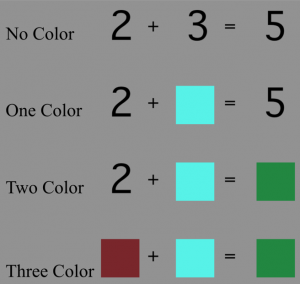Recently The Onion posted this tongue-in-cheek article regarding synesthesia. For those of you who may not know, synesthesia is a neurological phenomenon in which people experience cross-sensory perceptions. Fellow PIA blogger Emma Geller has written a fabulous primer to the world of synesthesia, located here, but the quick-and-dirty version is that synesthetes have associations between senses that are unique to each person, involuntary and automatic, and consistent over time. For example, grapheme-color synesthetes associate colors with letters and/or numbers, so a specific synesthete might associate the grapheme for the number 5 with the color green. This synesthete would always “see” 5 as green whenever viewing or thinking of a 5 (unique and automatic), would not have consciously chosen that association (involuntary), and would have felt that 5 is green for as long as they could remember (consistent). Currently researchers estimate that about 4% of the population has one or more type of synesthesia.
While the piece in The Onion may seem like nonsense, to a grapheme-color synesthete whose color associations match the colors presented, the article might make perfect sense. In my previous lab at the University of Nevada, Reno, we tested this very idea and found that grapheme-color synesthetes can use graphemes and their color associations interchangeably to solve simple arithmetic equations (McCarthy, Barnes, Alvarez, & Caplovitz, 2013). If for example, a certain synesthete viewed 4 as orange, 5 as green and 9 as pink, then, when presented with an equation made of blocks of color, that synesthete could answer accurately as to whether orange plus green equaled pink.
Synesthete participants were just as accurate on this task as they were at solving traditional equations like, “4 + 5 = 9.” They did, however, show a linear increase in reaction times depending on how many graphemes were replaced with blocks of color. This finding indicates that there is a certain about of cognitive processing (around 250 milliseconds’ worth) that takes place when translating the color to a grapheme. So while synesthetes can accurately perform the task, it would not necessarily be efficient for synesthetes to turn all numbers they encounter into blocks of their equivalent color, like the Onion article displays.
Still, the results have interesting implications for synesthetes, especially in conjunction with other findings that synesthetes do perform faster on tasks in which graphemes are displayed in their “correct” colors, and slower when shown in incongruent colors (Green & Goswami, 2008). The fact that synesthetes are so connected to their color associations means that those colors might help synesthete students when learning math. Imagine, for example, a computer game that displays numbers in a synethete’s colors and then tests their arithmetic ability, perhaps eventually replacing the graphemes with boxes of color to help students gain proficiency. Technology offers new opportunities to cater to children’s learning styles; since showing synesthetes numbers in the “wrong” colors can slow them down, and since classrooms often contain number lines with the numbers displayed in color, providing a computer program for synesthetic children could help as opposed to hinder their emerging math abilities. There is plenty of room for researchers in developmental psychology to explore how synesthetic percepts might be harnessed to improve educational performance for a small but significant portion of the population.

